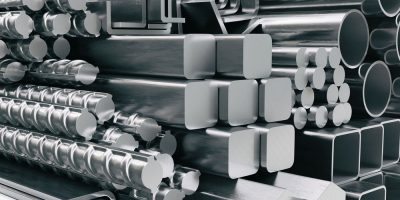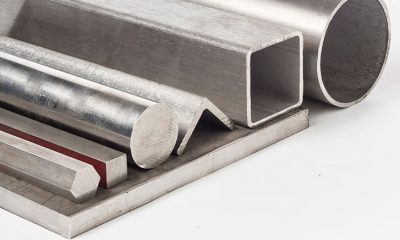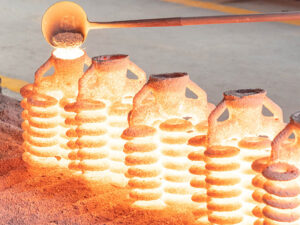Stainless steel, a material used in a wide range of industries, is favored by customers for its excellent corrosion resistance, strength and aesthetic appearance. In the field of manufacturing and processing, stainless steel is often used to produce high-strength, long-life parts. So why is stainless steel so popular? What are its characteristics and classifications? And in what industries can play an important role? This article will provide you with a detailed introduction.

I. Reasons for the popularity of stainless steel
Stainless steel has become a popular material for machining parts because of its many excellent properties. It has excellent corrosion resistance, high temperature resistance and beautiful metallic luster, which not only enhances the service life of the parts, but also adapts to a variety of complex manufacturing needs. In addition, stainless steel has a place in environmental protection and sustainability as it is 100% recyclable.

II. Overview
1. What is stainless steel?
Stainless steel is a ferrous alloy containing at least 10.5% chromium and is rust-resistant due to the passivation layer formed on its surface. This layer resists oxidation reactions and prevents corrosion.
2. Composition of stainless steel
Stainless steel consists of iron, chromium, nickel, carbon and other elements.
Among them, the content of chromium determines its corrosion resistance, while nickel and other alloying elements affect its strength and toughness.

3. Origin of stainless steel
Stainless steel is made by smelting iron ore with chromium and other alloying elements, and the commonly used smelting process includes electric arc furnace and oxygen converter process.
After smelting, stainless steel is refined and cast to form various shapes and sizes of steel.
4. Characteristics of stainless steel
The main characteristics of stainless steel include:
- High corrosion resistance
- High strength and toughness
- Good workability
- Aesthetically pleasing surfaces
- Stable properties at extreme temperatures.
III. Classification of stainless steel
Stainless steel can be classified according to its composition and crystal structure, and there are mainly the following categories:
Austenitic stainless steel
Containing chromium and nickel, with good corrosion resistance and toughness, commonly used in food processing equipment and the chemical industry.
Ferrite stainless steel
low carbon content, mainly used in automotive exhaust systems and appliance industry.
Martensitic stainless steel
Combines the advantages of austenitic and ferritic stainless steel, widely used in shipbuilding and petrochemical industry.
Duplex Stainless Steel
High strength and hardness, suitable for knives, bearings, etc.
IV. Properties of stainless steel

V. What are the commonly used stainless steel models?
Commonly used stainless steel materials include 304 stainless steel, 316 stainless steel, 430 stainless steel and 2205 duplex stainless steel.
304 and 316 are the most widely used austenitic stainless steels, 430 is commonly used in household products, and 2205 is favored by heavy industry for its combination of strength and corrosion resistance.

VI. Stainless steel industry applications
Stainless steel is widely used in a number of industry sectors:
Food processing industry
The food industry requires materials with high health standards and corrosion resistance. Stainless steel in the food processing industry applications mainly include food processing equipment, conveying equipment, storage equipment, etc.
Chemical industry:
Stainless steel has become an indispensable material in the chemical industry due to its corrosion resistance, high strength, high temperature resistance and strong stress resistance. It is mainly used in chemical reactor, heat exchanger and pipeline and transportation system.
Automobile manufacturing industry
Stainless steel’s high strength, corrosion resistance and beautiful lightweight and other advantages, can improve the safety performance and comfort of the car. In the automobile manufacturing industry is very widely used, covering from the body structure to parts of many aspects
Medical Devices
Stainless steel has a wide range of applications in medical equipment, mainly including surgical instruments, orthopedic internal fixation materials, dental implants and other medical equipment.
Construction Industry
It can be used for building decoration, structural support, utilities and piping systems. These stainless steel applications not only improve the aesthetics and durability of the building, but also enhance safety and functionality.
VII. Stainless steel parts processing and manufacturing methods
Stainless steel parts can be machined and manufactured by a variety of methods:

Suitable for precision parts with complex shapes, capable of achieving extremely high precision.

Suitable for the production of large parts with complex structures, with smooth surfaces and precise shapes.

Used for customized parts and small batch production, suitable for rapid prototyping.
Allied Metal provides one-stop stainless steel parts machining service, covering design, CNC machining, casting and surface treatment processes.
Contact us immediately for processing details
VIII. Advantages and Disadvantages of Stainless Steel in Manufacturing
Advantages:
- High corrosion resistance
- Good mechanical properties
- Easy to clean and maintain
- Aesthetic appearance
- Recyclable
Disadvantages
- Higher cost
- Difficult to process
- Corrosion and fatigue in specific environments
IX. Summarize
Stainless steel has become one of the indispensable materials in modern manufacturing due to its excellent performance and wide range of applications. From food processing to automobile manufacturing, stainless steel provides strong support for various industries.
By mastering the classification, characteristics and processing methods of stainless steel, enterprises can more effectively utilize this high-quality material to enhance product quality and competitiveness.
